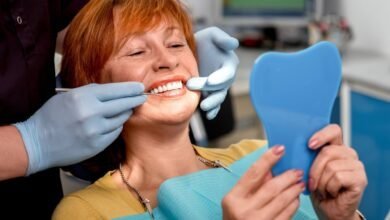Exploring the Benefits of Estrogen Replacement Therapy for Women

In the realm of women’s health, estrogen plays a pivotal role in regulating various bodily functions. However, as women age or undergo certain medical treatments, their estrogen levels may decline, leading to a range of uncomfortable symptoms and health concerns. In such cases, estrogen replacement therapy (ERT) emerges as a viable option to alleviate these issues and promote overall well-being. In this blog, we delve into the depths of estrogen replacement therapy, shedding light on its benefits, considerations, and implications for women’s health.
Understanding Estrogen Replacement Therapy
Estrogen, often dubbed the “female hormone,” contributes to the development of secondary sexual characteristics in women, regulates the menstrual cycle, and influences bone density, among other functions. As women approach menopause or undergo surgical removal of the ovaries, estrogen levels plummet, triggering a myriad of symptoms like hot flashes, vaginal dryness, mood swings, and bone loss. Additionally, low estrogen levels increase the risk of osteoporosis and cardiovascular diseases, underscoring the significance of maintaining hormonal balance.
Estrogen replacement therapy involves administering synthetic estrogen or a combination of estrogen and progestin to supplement dwindling hormone levels. It comes in various forms, including pills, patches, creams, gels, and vaginal rings, allowing flexibility in treatment options tailored to individual needs.
The Benefits of Estrogen Replacement Therapy
Alleviation of Menopausal Symptoms
One of the primary advantages of ERT is its efficacy in managing menopausal symptoms. Estrogen helps alleviate hot flashes, night sweats, vaginal dryness, and urinary symptoms, restoring comfort and quality of life for many women experiencing these distressing manifestations of hormonal fluctuations.
Bone Health
Estrogen plays a crucial role in maintaining bone density, and its decline post-menopause can predispose women to osteoporosis and fractures. Estrogen replacement therapy helps mitigate bone loss, reducing the risk of osteoporotic fractures and preserving skeletal integrity, particularly when initiated early in menopause.
Cardiovascular Protection
Estrogen exerts cardioprotective effects by improving lipid profiles, enhancing blood vessel function, and inhibiting the progression of atherosclerosis. ERT has been associated with a decreased risk of coronary artery disease and cardiovascular events in postmenopausal women, highlighting its potential in safeguarding heart health.
Cognitive Function
Emerging evidence suggests a link between estrogen and cognitive function, with estrogen therapy demonstrating potential benefits in preserving memory and cognitive abilities in postmenopausal women. While further research is warranted to elucidate the extent of these effects, ERT holds promise in promoting brain health and reducing the risk of cognitive decline associated with aging.
Relief from Vaginal Atrophy
Vaginal atrophy, characterized by thinning, dryness, and inflammation of the vaginal walls, is a common consequence of declining estrogen levels in menopausal women. Estrogen replacement therapy helps rejuvenate vaginal tissues, alleviating discomfort, and improving sexual function and satisfaction.
Considerations and Controversies
Despite its manifold benefits, estrogen replacement therapy is not without considerations and controversies. Long-term use of ERT has been associated with potential risks, including an increased risk of breast cancer, stroke, blood clots, and gallbladder disease. Therefore, the decision to undergo ERT should be individualized, weighing the potential benefits against the risks and considering factors such as age, medical history, and lifestyle habits.
Moreover, the optimal timing and duration of estrogen therapy remain subjects of debate. While initiating therapy shortly after menopause onset may confer maximum benefits in terms of symptom relief and bone preservation, prolonged use beyond five years may entail heightened risks. Healthcare providers must engage in informed discussions with patients, taking into account their preferences, concerns, and risk profile to formulate personalized treatment plans.
Conclusion
Texas Estrogen replacement therapy holds significant promise in addressing the myriad challenges women face as they navigate the complex terrain of hormonal fluctuations and aging. From ameliorating menopausal symptoms and preserving bone health to protecting cardiovascular and cognitive function, ERT offers a multifaceted approach to promoting women’s well-being. However, it is imperative to approach ERT with caution, weighing its benefits against potential risks and adopting a personalized approach to treatment. By leveraging the benefits of estrogen replacement therapy while mitigating associated risks, women can embark on a journey towards enhanced health, vitality, and quality of life.




